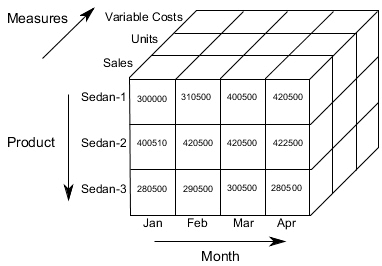
Tm1 saves your Business Analyses in Cubes. Every cell in a Cube has measure that you are pointing in an analysis. A cube can save data against many measures. You design a cube with Dimensions, which recognize the data or the measures you required to trace.one element in every Dimension recognizes the location in a cell. In the first Place it explains as Creating Cubes in Tm1.
Creating Cubes in Tm1:-
Generally,Each cube has maximum 256 Dimensions and minimum 2 dimensions. If we take an instance of two dimensional cube, it is best suited for lookup tables. you want to calculate values in other cubes, have many dimensions. If we take example, we can change the local currency amounts to reporting currency by implementing a two- dimensional cube. This cube save the exchange prices. You can get the price by Cognos TM1 online training rule and in Tm1 cubes.
The Data you get into a cube gives a screenshot of your business a pointed level of Details. For Instance, you can Import the monthly and weekly sales data of product.Especially,The Dimension elements that recognize these Data points are easy in every Dimension like sales for each week, product, and city.
Dimensions :-
By Implementing Dimension Hierarchies, you can simply calculate numeric Data into types that are useful into your analysis. Each set of category sets to a calculation of two or more elements in Dimension. For Instance you can design Quarterly element that add monthly sales amounts. In tm1 elements that see calculations known as the action Process.
Generally,Navigation by a Dimension View, A Dimension Hierarchy gives a road map for calculating the Data at many levels of Detail. Pumping down means, going to higher levels of in one Dimension. As a matter of fact creating Cubes in Tm1.
Up to the mark we have seen simple level of elements that you can set up to actions. tm1 prefers 3 types of elements. Element Attributes, the elements Recognize data in a cube and element attributes state the Element on their own.
Generally,Implementing the weights to show the actions, weight Factors will show the nature of elements to a action. Designing multiple tasks in a Dimension. You can push up low level data , like units and Sales in so many ways by Designing Architectures in a Dimension. By Implementing Move up in a dimension. You can Decrease so many Dimensions and empty Cells cube.
Designs:-
Designing complex calculations,Tm1 calculates the actions , that you can Design in Dimension by the factors of weight you assign. To Design ratios in multiplying values or elements. The values related with elements. You must Design a critical calculation known as rule. You can implement rules to tally the components and Tm1 bytes.
Multi-Dimensional tuple sets not allowed to aggregate across calculated cells, until they come and club with single Dimension member sets. meant that members not Implemented in member set. Especially ,In this type the result of calculated cells is resulted in Error Cell. In the same fashion Creating Cubes in Tm1.
Hierarchy:-
Rules take higher to Implement the actions , in cubes .spare cubes will have more number of Empty cells. Tm1 also supports calculation process. This feature can be seen in IBM cognos by the Cognos BI Intelligence clients. In older version of cognos Tm1 the in built aggregation cant be computed. In older versions Cognos BI send back errors cells,as a output Inbuilt aggregation is Implemented to Cognos Tm1 Rules.Especially All the above topics explains about Creating Cubes in Tm1.
Aggregated cells linked with the equal rule so that system can again use this rule for the aggregation Result The hope of this rule requires to be general enough to contain UDC. A pick list is a scale of valid values for a specific elements of the cube cell. When a Admin derives a pick list for an cell contains the predefined values has in a specified cell. When they are Implementing a cube in any of the Cognos TM1 online course clients. In the same way Creating Cubes in Tm1.
Recommended audience :
Software Developers
Project managers
Database Administrators
Prerequisites :
There were nothing much prerequisites required to purse the Cognos TM1 Course. It good to have a basic knowledge of one of the programming languages like C, Java, Python. And one basic idea on storage programming like SQL, but not mandatory. trainers of OnlineITguru will teach you from the basics if you do not have knowledge.